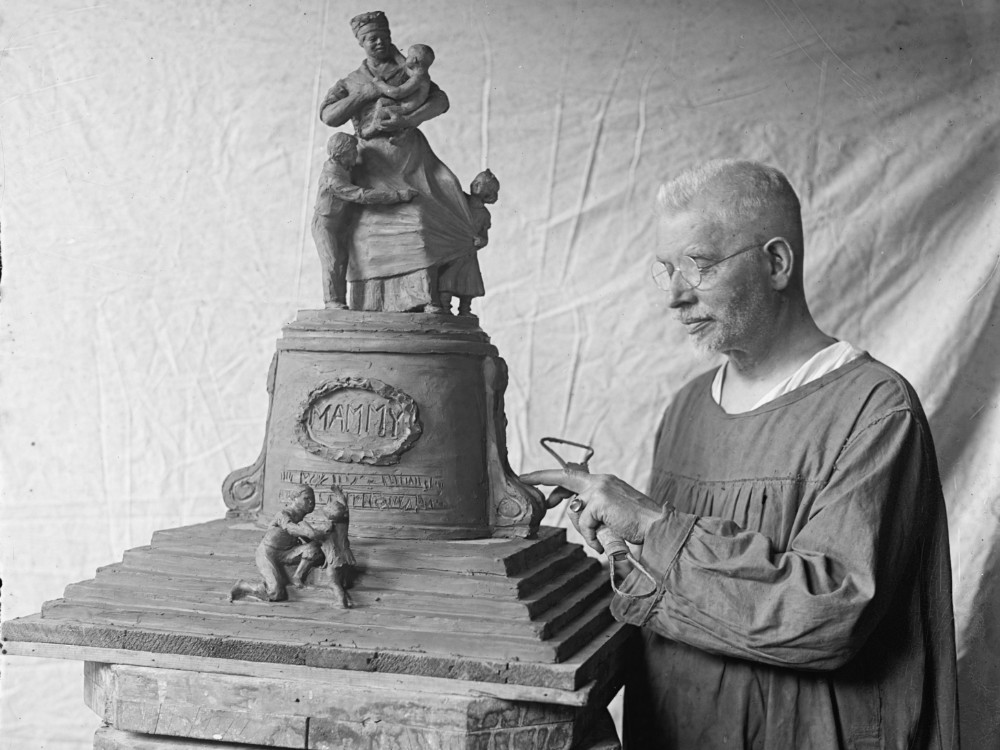Our nation’s capital is full of statues, monuments and memorials that are meant to celebrate our shared national values and our greatest heroes.
Not everybody sees it that way, of course, but that’s the idea.
Though I’m pretty sure a lot of people would have their doubts, had the US gone ahead with a plan to put a giant statue celebrating slavery in the middle of Washington DC.
This is the story of a public art installation that’s become known as the “Mammy memorial.”
“Mammy” is an old term used to describe enslaved Black domestic workers in pre-Civil War America.
They were often portrayed as older and larger women who were content to look after the master’s children and household.
The whole concept here was a myth – read any of the stories of actual enslaved people – but myths can be important to people, and that’s where the memorial comes in.
There were people in the decades after the Civil War who pushed this narrative that the times when the US had slavery were better than the ones that followed the Civil War.
This was partly an image rehab for the pro-slavery secessionists, but it was also a way to try to push the country back toward the pre-war racial dynamics.
The Constitution had forbidden most forms of slavery, so they pushed for the closest alternatives.
This is when you see segregation and other widespread forms of discrimination against Black Americans.
Jim Crow laws pop up in state after state; the Ku Klux Klan reaches peaks in size and influence.
Monuments were a part of this push too: a group called the United Daughters of the Confederacy proposed a series of monuments that would celebrate, as one backer put it, the enslaved domestics’ “devotion to their owners, their faithfulness in performing their labors and caring for us during these terribly disastrous years.”
The US Senate approved a bill granting land for a statue near the US Capitol, depicting a Black woman looking after several white children.
The mainstream press gave this no more attention than it gave to another plan to create a monument to baseball.
But before the US House could vote, the story caught fire in Black newspapers.
That led to massive protests and a letter-writing campaign by Black Americans against the idea.
After that, groups of Union veterans started speaking out against it too; they were insulted by the idea of a slavery memorial in the capital of the country when they’d fought a war to abolish that institution.
Congress eventually adjourned without doing anything further, which put an end to the plan.
But there were similar statues put up in several states, and several years after the Senate passed the bill, the movie “The Jazz Singer” made history as the first “talkie.”
It featured Al Jolson in blackface singing a song known as “Mammy.”
In 2019, Cynthia Erivo won acclaim for her starring role in a biopic about the abolitionist and Underground Railroad conductor Harriet Tubman.
But the movie could have gone way off the rails.
Screenwriter Gregory Allen Howard said in a Q&A that it took many, many years to make the movie happen, and at one point on that long journey, a Hollywood executive wanted Tubman to be played by Julia Roberts.
When Howard asked how a very white movie star was supposed to play a Black civil rights icon, the exec reportedly replied, “It was so long ago. No one is going to know the difference.”
The Mammy Washington Almost Had (The Atlantic)
A Hollywood executive wanted Julia Roberts to play Harriet Tubman in a biopic (CNN)
We’d built a nice monument to our Patreon backers if we could

